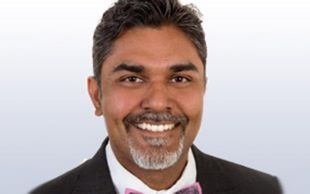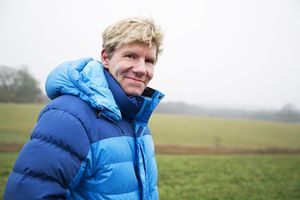The Nordic Initiative that the World Doesn’t Want or Need
by Björn Lomborg
Prime Minister Bjarni Benediktsson will join his counterparts from Norway, Denmark, Finland and Sweden in Bergen on Tuesday to present a common approach on the United Nations’ Sustainable Development Goals (SDGs). Unfortunately, the prime ministers have their priorities backward.
Although it is initially being funded with just ISK 1.1 billion, the presence of all five prime ministers indicates the importance that Iceland, Denmark, Finland, Norway, and Sweden are giving the “Nordic Solutions to Global Challenges” initiative. This will promote “Nordic knowledge of green transition, gender equality at work and sustainable food and welfare solutions”.
The problems start with the SDGs themselves. After a cumbersome process, the UN set 169 development targets for between now and 2030. This is far too many.
The Millennium Development Goals, which ran successfully until 2015, had just 18 important ambitions, such as halving poverty, halving people going hungry, and cutting child mortality by two-thirds.
There are so many SDG targets that nobody expects donors to focus on all of them, or for them to be fully implemented. The OECD estimates meeting all 169 targets would cost ISK 330-450 thousand billion annually – over 20 times more than the nearly ISK 13,200 billion (USD$131.6 billion) available each year for overseas development.
Donor governments are effectively left the task of prioritizing between targets. As generous, global leaders, the signal sent by Nordic countries is important.
Focusing on green policies is well-intentioned. But malnourishment claims at least 1.4 million children’s lives annually, 700 million people live in extreme poverty, and 2.6 billion lack clean drinking water and sanitation.
The message that the Nordic leaders are at risk of delivering is that it’s less important to focus on targets like eliminating tuberculosis and malaria or reducing global maternal mortality, than to advance SDG targets like the development of tools to monitor sustainable tourism, or promoting “education for sustainable development and sustainable lifestyles”, whatever that may mean.
Wealthy Scandinavian countries are not connecting with what the world’s poor want. The UN asked more than 9.7 million people across the world about their priorities. For the entire world and for those living in the poorest countries, climate came last, after 15 other priorities. Top priorities of developing nations are unsurprisingly education, healthcare, jobs, reduced corruption, and food
These basic desires line up with Copenhagen Consensus’seconomic research on the areas where development is most effective.
My think-tank commissioned 82 economists and 44 sector experts to analyse the SDGs. We discovered some targets would achieve a huge deal at low cost, and others very little at high cost.
Spreading money thinly across all of them reduces the overall good. A panel of Nobel laureate economists concluded that donors could achieve four-times more good by sharpening the 169 targets to just 19 ‘phenomenal’ priorities.
An effective Nordic Solutions initiative would focus on these. It would tell the world: we recognize that reducing childhood malnutrition is crucial, because it produces more than 40 krónur in long-term social benefits for every króna spent.
It would say that protecting coral reefs is a vital environmental target because in addition to biodiversity benefits, healthy reefs increase fish stocks, benefitting fishermen and tourism.
And it would promote universal access to contraception and family planning, which would avert 150,000 maternal deaths and 600,000 child deaths, for an annual cost of just ISK 360 billion ($3.6 billion).
Instead, the Nordic Solutions initiative has a troubling focus on climate solutions, which the world placed squarely at the bottom of its priority list, and which are one of the least effective ways of helping humanity – inefficient even at solving the problems that will be exacerbated by global warming.
Consider malaria, agriculture and extreme weather. The Paris Treaty, fully implemented, might avert 1,400 malaria deaths per year for an annual cost of ISK 100 trillion ($1 trillion). But spend just ISK 50 billion krónur ($500m) on direct malaria policies like mosquito nets and you will save 300,000 lives annually. Similarly, investing directly in better farming technologies will help agriculture much more than any carbon cuts could. And extreme weather mostly hurts the poor because they’re poor: the same level hurricane can claim many lives in Honduras yet leave somewhere like Florida relatively unscathed. Our goal should be to lift people out of poverty.
Encouraging poor nations to “transition” to solar panels when many citizens still lack access to reliable energy is out-of-touch with reality. Solar panels are only good to power a single lightbulb or to charge a cell phone, but cannot power the machinery for agriculture or business, or keep refrigerators running that will keep vaccines safe and stop food from spoiling.
It is grid electricity – which usually means fossil fuels – that is transformative. A Tanzania survey shows almost 90% of solar-connected households want grid access. When Greenpeace installed solar panels in Dharnai, India, protesters demanded “real energy” instead of the feeble “fake” energy, and got grid access from the government. A study from the Center for Global Development revealed that if instead of spending money on renewables, we used it on gas electrification, we could lift four times more people out of darkness and poverty.
When children are starving and dying from easily curable diseases, lacking access to education and opportunity, their families are not demanding carbon neutral transport, solar panels, or organic food. Offering these fails to recognize the real problems facing our world.
The Nordic Solution initiative is well-meaning, but it tells the world that Scandinavia cares more about rich northerners’ own concerns than what the poor need.
Bjorn Lomborg is director of the Copenhagen Consensus Center, author of The Skeptical Environmentalist, Cool It, and The Nobel Laureates’ Guide to the Smartest Targets for the World 2016-2030, and a visiting professor at Copenhagen Business School.











